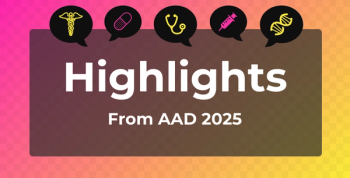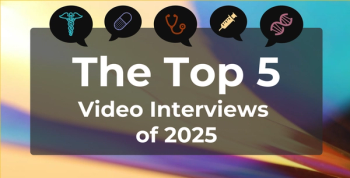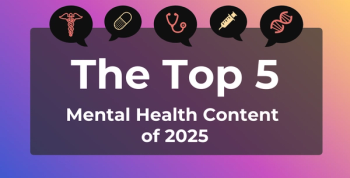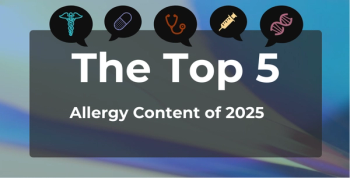
5 Things to Know About Long COVID
Key Takeaways
- Long COVID definitions vary, complicating diagnosis and treatment, with common symptoms including fatigue, chest pain, and changes in smell.
- The condition significantly impacts work productivity and financial stability, with affected individuals experiencing reduced work hours and unemployment.
Although a standardized definition has yet to be established, long COVID is generally considered the extended presence of post–COVID-19 or respiratory illness–related symptoms. These symptoms, like the definitions, vary by organization; however, authors of a recent study published in
Here are 5 things to know about long COVID, including symptoms, its impact on clinical practices, work and financial impairments, and policy.
1. A Call for a Standardized Definition
Because definitions vary so drastically, it is hard to pinpoint an exact number of people who may be currently experiencing long COVID or who are more susceptible to experiencing it. However, there were more than 100 million cases of SARS-CoV-2 infection in the US during the COVID-19 pandemic.1 As of August 12, 2025, the
Regarding standing definitions, major organizations like the
The American Journal of Managed Care® (AJMC®) spoke with
“Just in general, being able to get that diagnosis relies on going into a provider who has some sort of understanding or knowledge of both [COVID-19] and long COVID,” Wisk said in an interview with AJMC. “And I think [that is] very much wrapped up in the standard issue access problems that we have in the United States, where getting access to a high-quality provider in a timely fashion [is] not something that everybody can do, unfortunately.”
2. Clinical Burden: Long COVID Impairments
In
- More tired than usual
- Pain or tightness in your chest
- Diarrhea (>3 loose or looser than normal stools in 24 hours)
- Decreased smell or change in smell
- Fatigue, tiredness, or exhaustion
The CDC also stated that people most likely susceptible to long COVID can be women, Hispanic and Latino people, people who have experienced more severe COVID-19 illness, those with underlying health issues, adults 65 years or older, and those who did not receive a COVID-19 vaccine.
Another study, led by Michael Gottlieb, MD—also
Using the same INSPIRE cohort data, the study included 4119 US adults with COVID-19-like symptoms regardless of SARS-CoV-2 test results, 91.4% of whom reported at least 1 positive test since enrollment. Nearly all participants (3482 [95.1%]) received at least 1 COVID-19 vaccine, with most participants (2609 [71.2%]) reporting receiving 3 to 5 doses of a COVID-19 vaccine. Among participants, 27.1% (n = 994) reported current long COVID; these individuals were more likely to have reduced work hours, experience periods of unemployment, and attribute work loss to their symptoms when compared with individuals who reported never having long COVID (2604 [71.1%]) and those with resolved long COVID (65 [1.8%]).
The study authors noted that these findings “underscore the persistent and debilitating nature of long COVID,” as participants who reported ongoing long COVID symptoms had higher odds of experiencing worse rates of returning to work full-time and worse overall productivity, general activity impairment, and financial outcomes.2
“There is a need for more robust literature to better understand the influence of specific long COVID phenotypes on work and financial challenges, as well as interventions to both prevent and treat long COVID,” Gottlieb said in a written Q&A with AJMC. “Given the large number of people living with long COVID, as well as the persistence over time, we expect this to have a continued major economic impact on both individuals and society at large.”
3. Health System Impact
With ongoing research attempting to consolidate and rewrite a standard long COVID definition that reduces misdiagnosis, outpatient health care utilization has increased due to long COVID patients.3
A study published in
The World Health Organization, in 2021, released an International Classification of Diseases, Tenth Revision (ICD-10) code for long COVID, which does not specify a length of time following COVID-19 diagnosis. However, once it was released, research showed inconsistencies in coding practices and adherence to the long COVID definition outlined in the ICD-10 code.4
“Early identification and management of [long COVID] could play a critical role in alleviating the disease burden for both patients and the health care system,” the authors of the BMC Public Health study wrote.3
4. Treatment and Management Gaps
One of the distinguishing features between potential long COVID cases—among COVID-19 cases— and other respiratory-related illnesses is the number of symptoms present. Those with potential long COVID had a higher count of overall symptoms than those with other conditions. The self-reported nature of studies evaluating long COVID definitions creates a substantial differentiation in symptoms, in addition to a surplus number of overall symptoms to account for. In Wisk’s study, the list of symptoms used for defining long COVID across the 5 studies accounted for 24.8% to 32.9% of variation simply based on which symptoms each study chose to include. The NASEM definition is also even broader than those 5 studies because it also includes COVID-19–negative patient-reported symptoms.1
However, this is not without downsides, as the excess number of symptoms covered can potentially overcomplicate the diagnosis, reporting, and treatment of long COVID.
“If we don't have a good way to actually tell someone has long COVID, it's really hard to know if the current treatment protocols we've developed are going to do well for them,” Wisk said.
This cause for concern comes from potentially missing people who may have long COVID but may not meet a standard definition and overdiagnosing people whose symptoms may align with said definition but who don’t actually have long COVID.
“And if we're giving them a treatment for long COVID, we might be missing an opportunity to treat what's actually causing their symptoms,” Wisk explained. “I think both under- and overdiagnosis are potentially problematic here.”
On the other hand, Wisk also explained that while there are limitations and redundancies to collecting and basing data on self-reported symptoms, she said it is “the best that we’re going to get.” The self-reporting method for ascertaining the potential of symptoms for long COVID, Wisk says, is “fairly accurate at a given point in time”; however, when patients have to recall symptoms or how they felt from a month or 3 months ago, it’s harder for clinicians to obtain accurate reflections.
“It is crucial to establish a universally accepted definition of long COVID that is informed by comprehensive research and that is both sensitive and specific,” the study authors noted. “Without a validated, objective diagnostic tool to identify long COVID, most studies have relied on patients’ self-reported symptoms or those documented in the medical record to classify this condition.”1
5. Policy and Research Needs
More policy and research are needed to aid individuals who may be experiencing long COVID.
“We would encourage policies to help support those experiencing long COVID, including extended leave and workplace accommodations, including work from home and reduced hours,” Gottlieb wrote. “Most importantly, as long COVID affects individuals differently, we encourage employers to work with individuals to identify what accommodations can best meet their unique individual needs.”
In addition to the need for more robust literature, Gottlieb also encourages public health organizations to continue to advocate for resources and support for those who may be experiencing long COVID.
In 2022, the Biden administration launched a US government-wide response to long COVID to help direct federal efforts to identify the most immediate long COVID needs, but it did not describe the role of public health organizations addressing long COVID.The response addressed surveillance of the virus, primary prevention such as vaccination, and general public awareness, among other variables. 5
“An approach centered upon adaptability, humility, and engagement of multiple sectors may be needed to meaningfully support those affected,” the government response concluded. “Many people are in need, and there is much work to be done.”
References
1. Wisk LE, L’Hommedieu M, Diaz Roldan K, et al. Variability in long COVID definitions and validation of published prevalence rates. JAMA Netw Open. 2025;8(8):e2526506. doi:10.1001/jamanetworkopen.2025.26506
2. Gottlieb M, Chen J, Yu H, et al. Work impairment and financial outcomes among adults with vs without long COVID. JAMA Netw Open. 2025;8(8):e2526310. doi:10.1001/jamanetworkopen.2025.26310
3. DeVoss R, Carlton EJ, Jolley SE, Perraillon MC. Healthcare utilization patterns before and after a long COVID diagnosis: a case-control study. BMC Public Health. 2025;25(1):514. doi:10.1186/s12889-025-21393-4.
4. Zhang HG, Honerlaw JP, Maripuri M, et al. Potential pitfalls in the use of real-world data for studying long COVID. Nat Med. 2023;29(5):10401043.
5. Patel PR, Desai J, Plesica M, Baggett J, Briss P. The role of US public health agencies in addressing long COVID. Am J Prev Med. 2024;66(2):921-926. doi:10.1016/j.amepre.2024.01.004
Newsletter
Stay ahead of policy, cost, and value—subscribe to AJMC for expert insights at the intersection of clinical care and health economics.







































